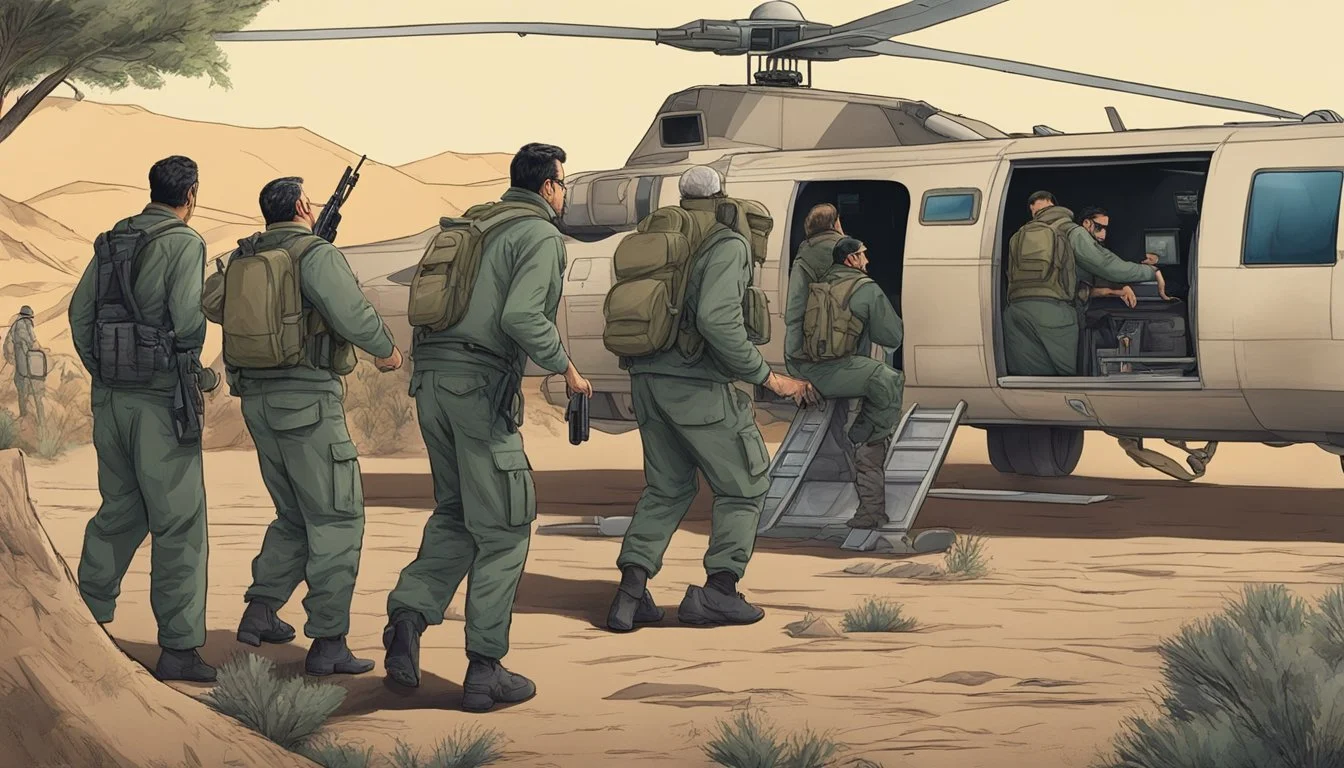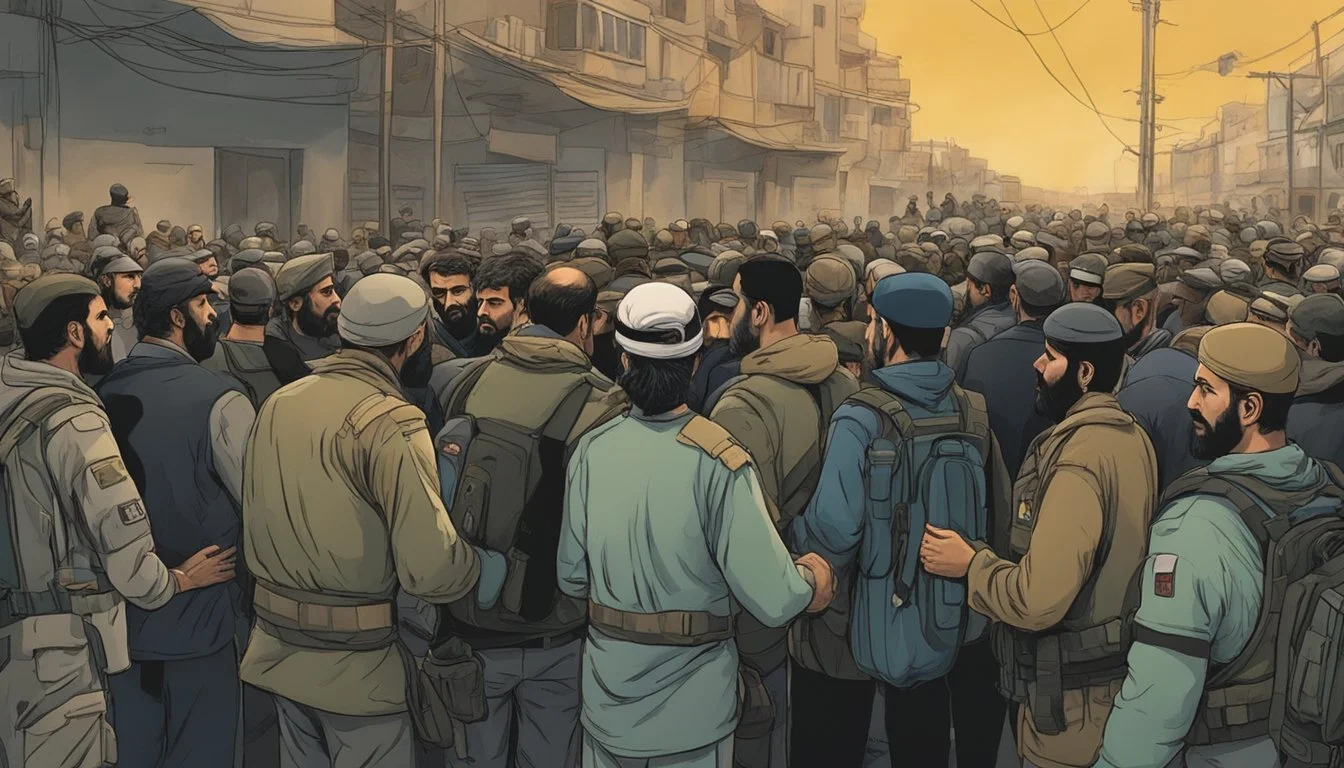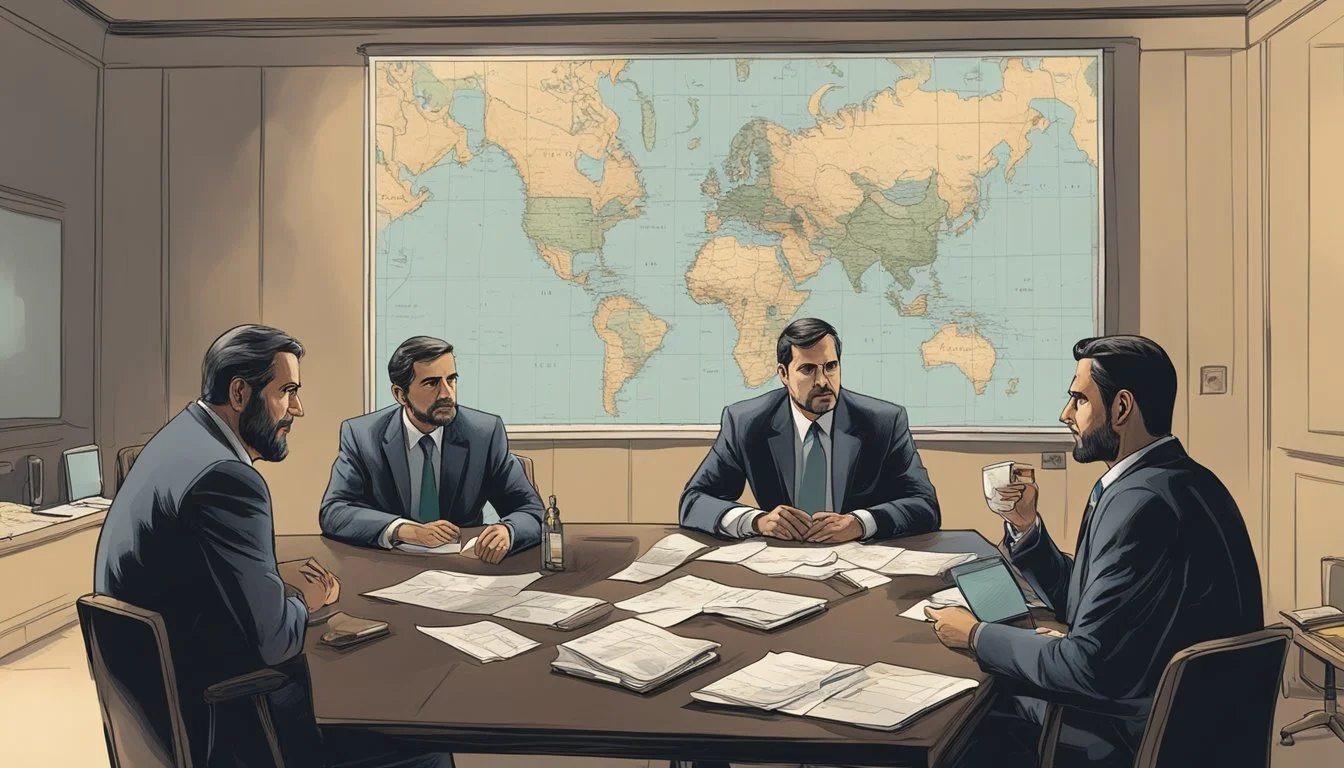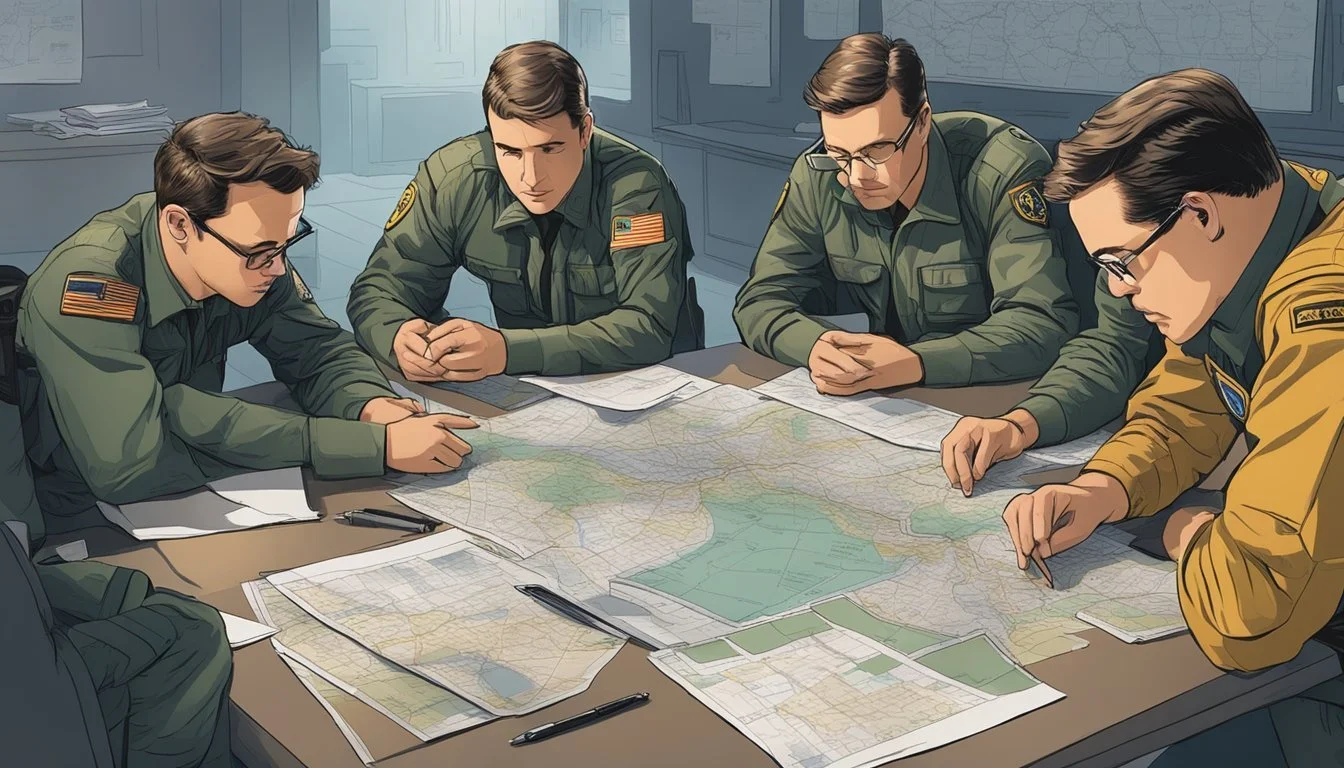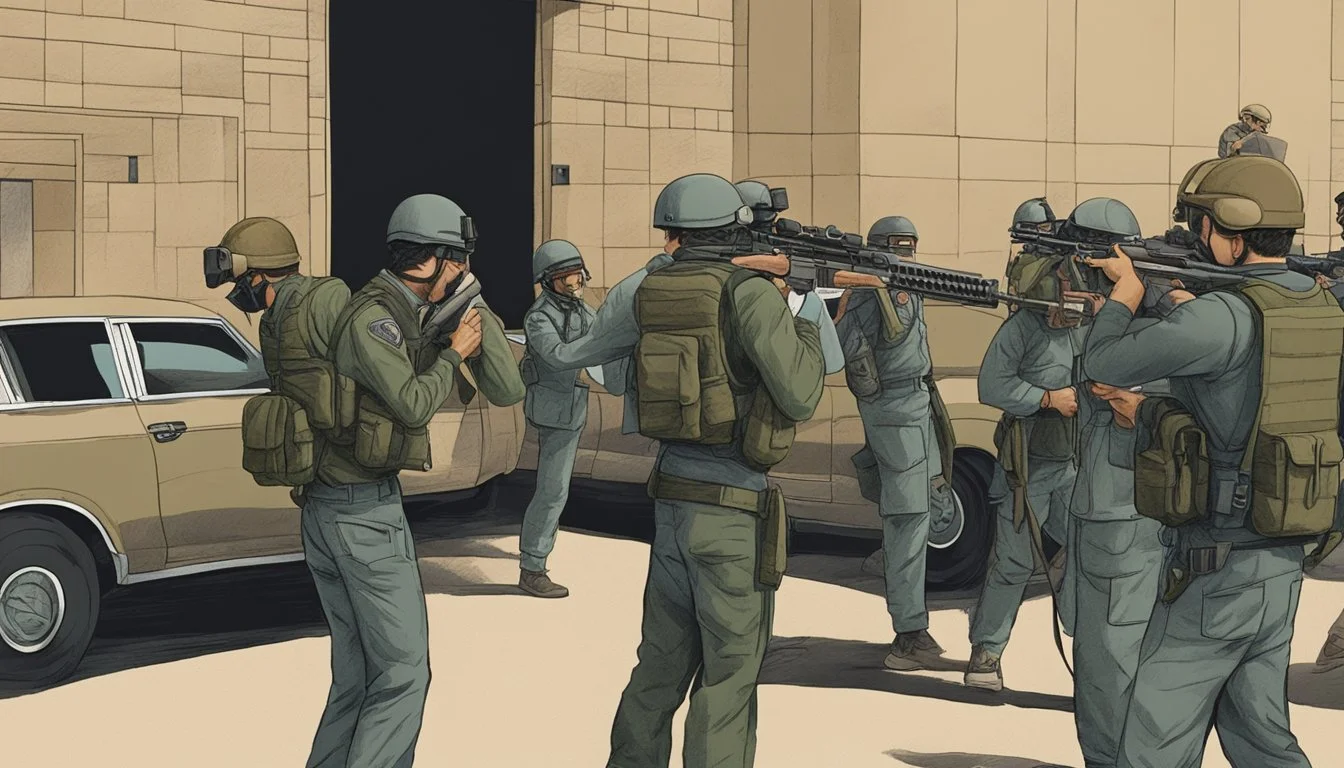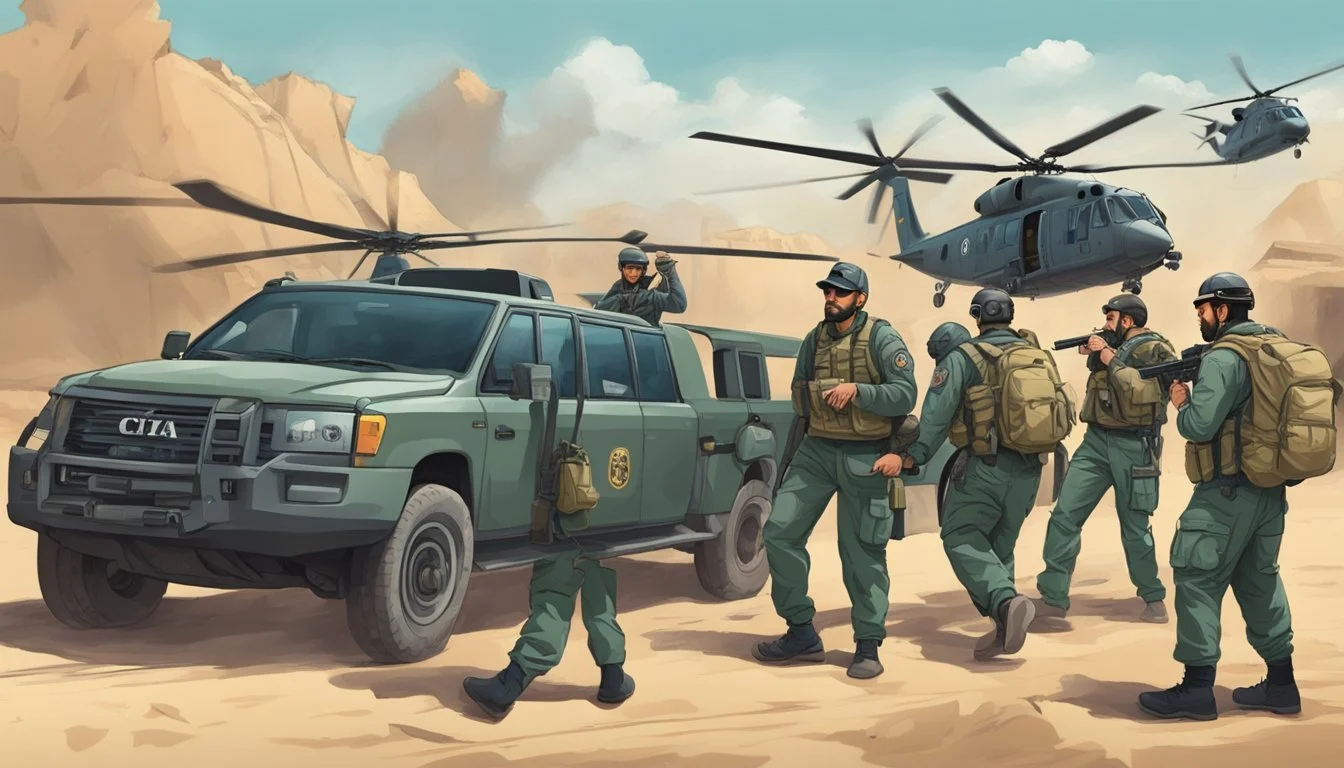The Real CIA Operation that Inspired 'Argo': Uncovering the True Story
The 1979 Iran Hostage Crisis was a pivotal moment in history, sparking a covert CIA operation that would later inspire the Hollywood film "Argo." The real CIA operation, masterminded by ex-agent Tony Mendez, involved an intricate ruse to exfiltrate six American diplomats from an Iran engulfed in revolution. What made this mission unique was the use of a fake Hollywood movie as a cover story, blending espionage with the glitter of showbiz.
Mendez's plan revolved around staging a fake Canadian film production named "Argo," which allowed the diplomats to pose as a film crew scouting locations in Tehran. This story of ingenuity and bravery demonstrated the lengths to which intelligence officers would go to safeguard American lives. The operation's genius lay not only in its audacity but also in its flawless execution, highlighting the complex interplay between strategy and creativity in covert missions.
"Argo" remains one of the CIA's great successes, a testament to innovation and partnership between the United States and Canada. The operation's legacy is a compelling narrative of courage and cleverness, capturing the imaginations of audiences worldwide and underscoring the real-life drama behind some of history's most daring escapes.
Context of the Iran Hostage Crisis
The Iran Hostage Crisis was a pivotal event in U.S.-Iranian relations, sparked by escalating tensions following a revolution that dramatically shifted Iran's political landscape. The takeover of the U.S. Embassy in Tehran by militant students led to a standoff lasting 444 days.
The Iranian Revolution and U.S. Involvement
The Iranian Revolution in 1979 saw the overthrow of Shah Mohammad Reza Pahlavi, a regime closely aligned with the United States. The Shah's modernization policies and secret police, SAVAK, generated internal dissent. Ayatollah Ruhollah Khomeini emerged as the revolution's leading figure, advocating for an Islamic state.
U.S. support for the Shah, particularly during his exile and medical treatment in the States, fueled anti-American sentiment. The Revolutionary Guard played a critical role in consolidating the new regime’s power, purging opponents, and reshaping the country’s political and social order.
The U.S. Embassy Takeover in Tehran
On November 4, 1979, militant Islamic students stormed the U.S. Embassy in Tehran, capturing 66 American diplomats and citizens. The Hostage Crisis gripped the nation, becoming a focal point of U.S. foreign policy. Six Americans evaded capture and sought refuge with Canadian diplomats, eventually escaping through a CIA-led operation known as "Argo."
The hostages endured 444 days of captivity. This crisis highlighted the tension between revolutionary Iran and the United States, significantly impacting U.S. diplomacy. The ordeal concluded on January 20, 1981, coinciding with the inauguration of President Ronald Reagan.
The Hollywood Connection
The collaboration between the CIA and Hollywood was the linchpin of the Argo operation. This partnership not only established a fake film production company but also enabled the creation of a convincing sci-fi movie to aid in the exfiltration mission.
Creating Studio Six Productions
Studio Six Productions was a front created by the CIA to make the fabricated movie seem genuine. The agency enlisted the talent of real Hollywood professionals to make this operation a success.
John Chambers, a Hollywood makeup artist known for his work on Planet of the Apes, played a key role in establishing the credibility of Studio Six. The studio even went so far as to set up an office, secure phone lines, and produce promotional materials, making the whole setup appear legitimate. The Hollywood professionals involved made sure that every detail was meticulously crafted to avoid arousing suspicion.
The Fake Sci-Fi Film: Argo
The fake sci-fi film, aptly titled Argo, was a critical component of the operation. The plot was designed to be a grand space adventure, replete with exotic locations and other elements that justified the Iranian locale for its shooting.
The screenplay and concept art were developed to perfection, further adding layers of authenticity to the project. Promotional materials, including movie posters and press releases, were distributed to create buzz around the film in industry circles. This level of detail ensured that Argo could serve its purpose as a believable cover for the exfiltration mission. The success of this part of the operation was essential for the safe extraction of the six U.S. Embassy staffers from Tehran.
Planning the Rescue Mission
The rescue mission to save the six Americans trapped in Tehran during the Iranian hostage crisis required both creativity and precision. The operation was spearheaded by CIA officer Tony Mendez and relied heavily on the use of Canadian passports to create a believable cover story.
Tony Mendez's Ingenious Strategy
Tony Mendez devised a unique plan to extract the Americans from Iran by posing as a Canadian film crew scouting locations for a science fiction movie. This audacious strategy was built around the cover story of a fake film project named "Argo." Mendez's experience in disguises and forgeries played a crucial role in making the ruse believable.
Supported by expert forgers and Hollywood special-effects artists, Mendez meticulously crafted Canadian identities for the six Americans. He ensured that every detail, from visas to business cards, was authentic. This comprehensive approach was essential to deceive Iranian authorities and get the group through multiple security checkpoints.
The Use of Canadian Passports
Authentic Canadian passports were central to the success of the rescue operation. The Canadian government, aware of the stakes involved, issued genuine passports for the six Americans. These passports provided the necessary legitimacy for the cover story, particularly in the eyes of Iranian officials.
To ensure that the new identities would hold up under scrutiny, the CIA collaborated with the Canadian government and other intelligence operatives. Additional documentation, such as fake customs entry stamps and travel itineraries, were prepared to support the cover story. This coordinated effort between the CIA and Canadian authorities proved critical in the mission's success.
Operational Details and Challenges
The operation to exfiltrate six American diplomats from Iran in 1980 required meticulous planning and precise execution. The mission involved creating false identities and navigating the complex political landscape of the time.
Falsifying Identities and Documents
Creating credible false identities was crucial for the success of the operation. The CIA, in cooperation with the Canadian Government, provided the six diplomats with Canadian passports. These documents had to withstand rigorous scrutiny from Iranian authorities.
The team had to master these new identities, including learning key Farsi phrases to avoid suspicion. Fake backstories were crafted to explain their presence in Iran. The passports and associated documents were tested against known security measures to ensure their validity.
Navigating Political and Diplomatic Waters
The operation also required delicate handling of international relations. The Canadian Embassy in Tehran played a pivotal role by providing a safe haven for the diplomats. This required significant trust and coordination with the Canadian Government, which supported the extraction plan fully.
Moreover, the CIA had to consider the ramifications of the operation on U.S.-Iran relations. The political climate was volatile, and any misstep could lead to catastrophic outcomes for the trapped diplomats and potentially escalate the hostage crisis. Negotiations had to be conducted discreetly to minimize the risk.
Execution of the Rescue
The execution of the rescue operation was a meticulously planned mission that involved creating a convincing disguise for the American diplomats and executing a strategic escape from Tehran.
Assembling the Pretend Film Crew
To camouflage the six American diplomats' escape, the CIA fabricated a cover story about a Canadian film crew scouting locations for a science-fiction movie titled Argo. The agency collaborated with Hollywood professionals to create a fake production company, complete with scripts, storyboards, and advertising materials.
Tony Mendez, a CIA officer, led the mission. He trained the diplomats to convincingly pass as a Canadian film crew. Each diplomat received a false identity, complete with matching passports and other documentation.
The team meticulously rehearsed their roles, ensuring they could handle potential questioning. The fake film project was so detailed that it included a working office in Hollywood, which fielded calls and inquiries about the movie.
The Day of the Escape
The risky escape attempt occurred on January 28, 1980. The “film crew,” now equipped with new identities and Canadian passports, departed for Tehran's Mehrabad Airport. Mendez, posing as the film’s director, accompanied them to ensure all aspects were controlled and believable.
At the airport, tension was high. Iranian officials questioned the validity of their documents. Mendez’s training paid off as the diplomats convincingly maintained their cover stories, presenting themselves as members of a genuine film crew.
After passing through security, the group boarded a Swissair flight to Zurich, Switzerland. The plane took off, and the diplomats finally breathed a sigh of relief, having successfully eluded capture and escaped the hostile environment of Tehran.
Post-Operation Effects and Revelations
The successful execution of the Argo Operation had significant impacts. It sparked extensive media coverage and led to later revelations about the true nature of the mission, revealing various aspects to the public.
Reception in the United States and Canada
The high-stakes nature of the mission and its success captured the public's attention in both countries. In the United States, Americans celebrated the ingenuity and bravery displayed. The media praised the CIA and the cooperation between the Canadian government and the United States.
President Jimmy Carter's administration experienced a boost in morale due to the successful mission. The Canadian Ambassador to Iran, Ken Taylor, was hailed as a hero for his crucial role in sheltering the six American diplomats.
Canada also saw a wave of pride and approval from its citizens. The Canadian Embassy staff's efforts were widely lauded, strengthening diplomatic ties between Canada and the United States during a period of international tension.
Declassification and the True Story
Years after the Argo Operation, more details emerged. Initially, much of the information about the CIA's involvement remained classified. This changed when the operation's details were declassified more than a decade later.
The declassified documents revealed the true extent of the CIA's planning and execution, including the collaboration with Hollywood to create a fake film. The identity of key CIA operatives, including Tony Mendez and, later, Ed Johnson, came to light.
These revelations led to a broader appreciation of the complexity and danger involved in the mission. The truth behind the Argo Operation corrected various misconceptions and underscored the bravery and ingenuity of all those involved.
The Legacy of the Argo Operation
The Argo operation left a lasting mark on both CIA tactics and American pop culture, influencing real-world espionage practices and spawning an award-winning film.
Influence on CIA Tactics
The Argo operation showcased innovative approaches to clandestine operations. The creative use of a fake Hollywood production as a cover story demonstrated the CIA's ability to think outside traditional espionage tactics. This mission became a case study for intelligence agencies, emphasizing the effectiveness of non-traditional methods in delicate rescue missions.
Studies in Intelligence published a detailed analysis of the operation, highlighting how the agency integrated elements from popular culture to execute its plans. The mission's success reinforced the significance of adaptability and ingenuity in covert operations.
Cultural Impact and the Award-Winning Film
The operation's influence extended into the entertainment industry when Argo, directed by Ben Affleck, hit theaters in 2012. The film captured the dramatic escape and brought the story to a global audience. Argo not only became a box office success but also received critical acclaim, winning several Oscars, including Best Picture.
According to the Hollywood Reporter, the film played a vital role in educating the public about this little-known episode in American history. Affleck's portrayal of CIA officer Tony Mendez and the diligent research conducted through consultations with former CIA officers ensured the film's authenticity, thereby enhancing its cultural resonance.
Analysis and Commentary
The CIA's clandestine operation to extract six American diplomats from Iran during the 1979 Iranian Revolution, famously recreated in Ben Affleck's "Argo," provides a fascinating interplay between espionage and diplomacy. Hollywood's adaptation, though embellished in parts, still captures the core tensions and dramatic stakes of the real-life rescue mission.
Espionage and Diplomacy Interplay
The 1979 Iranian Revolution created a dangerous environment for American diplomats. The CIA, adept in espionage, collaborated with Canadian officials to execute a complex extraction plan. This mission, codenamed Operation Argo, highlights the symbiotic relationship between espionage and diplomacy.
CIA agents, disguised as a Canadian film crew, leveraged espionage tactics to communicate covertly with the hostages. Collaboration with Canada was vital; Canadian visas and cover identities provided credibility and safety. Diplomatic channels facilitated necessary authorizations and logistics. This operation underscores the blurred lines between espionage and diplomacy, showcasing how both disciplines can work in tandem to achieve critical objectives.
Hollywood's Portrayal of Real-Life Events
Ben Affleck's film "Argo" captures the essence of the CIA operation, though certain details are dramatized for cinematic effect. Hollywood, known for artistic liberty, introduces scenes of heightened tension that did not occur in reality. Affleck's portrayal of Tony Mendez, the CIA operative spearheading the mission, remains relatively accurate thanks to Mendez's real-life involvement as a technical advisor.
However, the film simplifies or omits key diplomatic aspects, such as the detailed collaboration with Canadian officials. While the movie offers an engaging narrative, those seeking a comprehensive understanding should reference historical records. The film does successfully convey the stakes and bravery involved, providing a window into the complexities of espionage during geopolitical crises.

